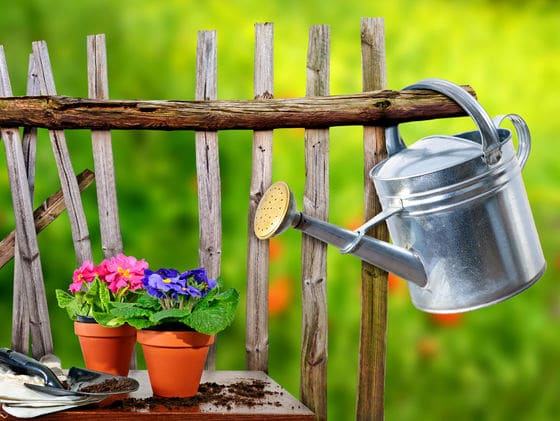Starting a container garden? Read these 5 basic container gardening tips to get the best result.
You’re probably reading this article because you have a passion for gardening, but you do not have a regular garden, because you live in an apartment (most probably), or you own a house in a city or your plot is too small? Whatever the reason is– there is a section of gardening that does not require large space: Container gardening.
 In this article, you will learn 5 basic container gardening tips, more useful if you’re a beginner and starting a container garden. These tips will help you to create a functional container garden on your balcony, patio or terrace.
In this article, you will learn 5 basic container gardening tips, more useful if you’re a beginner and starting a container garden. These tips will help you to create a functional container garden on your balcony, patio or terrace.
Basic Container Gardening Tips for Starting a Container Garden
1. Type and Size of the Container
Each material has its own characteristics: plastic deteriorate in the sun rays and in summer (especially in tropics) if exposed to full sun, plastic containers can cook the plants growing in them, however, plastic containers are light and movable. Then, you might think that the best choice is ceramic planters, but they are heavy and expensive and you can’t consider them if you don’t have a concrete balcony or roof. Clay pots, wooden, metal or concrete containers can be a choice too. Also, look at the size and design of containers that will suit your space. All in all, when choosing a container, you must consider these aspects.
2. Sufficient Drainage
If you’re a beginner and starting a container garden must remember to provide sufficient drainage to plants. Always check before planting that the container you’re using has enough holes to drain water or not? That will save the plants from root rot, which happens due to excessive moisture.
3. Quality Soil
For a healthy growth of plants, the soil is the key. Provide your plants quality soil so that they’ll get all the necessary nutrients for growth, flowering and fruiting. It is better to buy a potting soil but if you find that too expensive in terms of money, make it at home, also, add a lot of compost or manure in it to improve texture.
4. Sunlight
Most container plants require at least about 5 hours of sunlight daily, and they are likely to require daily watering – as the soil dries out quickly in the sun.
5. Choosing Right Variety of Plant
Grow the plants that are suitable for containers. Do research about the specific variety of the plant that is better for container gardening and suit your climatic conditions.
Advantages of Container Gardening
- Containers with plants and flowers can be moved to wherever you want to see them – to the terrace, balcony or indoors in the winter.
- Benefit of landscaping with containers is that even in an area with poor soil you can grow your plants in good quality soil.



I consider the variety of plant as the most important aspect of container gardening. There are plants that can’t survice such a small confinement hence you cannot plant just anything in a container. I am planning to have some in my garden too though.